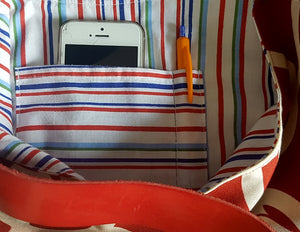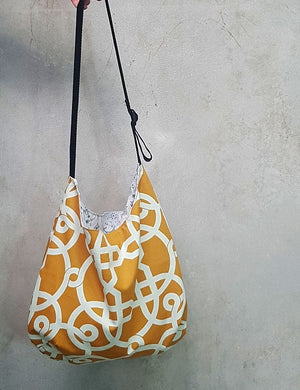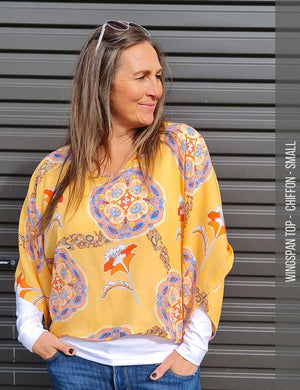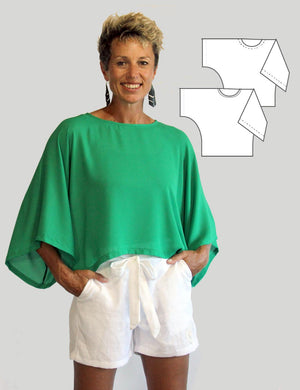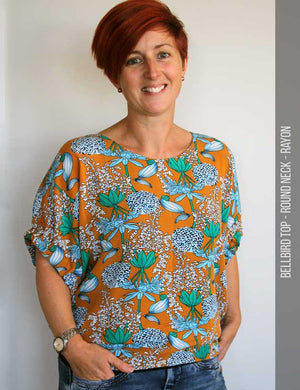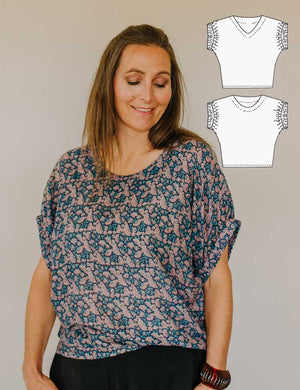FACINGS are mostly used to finish curved or shaped edges in necklines, armholes, hems and openings. Alternative methods of hemming curved edges can result in puckers (traditional folding under fabric) or attaching bias (a strip narrow strip of fabric cut on the diagonal).
This blog describes how to create a stand alone neck facing. If your facing combines both the neck and armhole together, check out the blog on the Burrito Method here.
Shaped facings are cut to match the outside shape of the fabric piece to provide a neat finish, and are often cut from the same pattern pieces.
The Tui Dress and Bellbird Top both have neck facings which help ensure the neck finish look professional. Neck facings are relatively simple to sew. There are a few ways to secure the facing to the bodice (last step) depending on the fabric being used.
Your pattern instructions should take you through how to attach the facing to your garment. This article shows how to attach a neck facing but the principle is the same for armholes, hems and openings.
1. Your facing should be sewn together at the shoulders and the outer edge should be finished either using a zip-zag stitch or overlocker/serger.
2. With the right sides together, pin the facing to the garment bodice around the neckline. Be sure to match the shoulder seams.


3. Sew around the neckline in a full circle with a 1cm (3/8") seam allowance.
4. Before turning the facing to the inside it is necessary to remove some of the fabric bulk so that the facing sits as flat as possible when finished. You achieve this by cutting small triangular notches on the inside of the neck curve. Be sure not to cut into the stitching. Cut a notch every inch (approximately).

4. Turn the facing to the inside of the garment. At this point you may like to understitch the facing to prevent the facing from rolling outwards and achieve a more professional finish. Have a quick peek at how to understitch here.
5. Now pin the facing in place ensuring the it sits as flat as possible (without puckers or gathers).

At this point you have TWO OPTIONS to secure the facing to the inside:
1). Sew the facing all the way around the wider external edge.
- This method secures the facing the best and works best on stable fabrics like cotton.
- Recommended for more confident sewers as you need to ensure your stitching is a consistent width and the facing does not pucker when you sew (it helps if you put tension on the seam as you sew it).

Facing secured with circular stitching around entire neckline (3cm).
This is an example of a neck facing sewn using method 1.
The fabric is a polyester and it may have better to have been secured using method 2 as you can see a little puckering occurring due to the more delicate nature of the fabric.
2). Attach the facing to the bodice at the shoulder seams only.
- This method is recommended for beginner sewers
- Recommended also for more delicate (and less stable) fabrics like polyesters and crepes.

METHOD 1 - STITCHING AROUND THE NECKLINE
On the inside of the garment, and with the facing pinned in place, stitch a full circle around the outer edge of the facing, a consistent distance from the neckline. Use the outer edge of the facing as your guide.


METHOD 2 - SECURE FACING AT SHOULDER SEAMS
On the outside of the garment (right side up), "Stitch-in-the-ditch" along the shoulder seam for the full distance of the facing. If you are careful (and accurate) the stitching should be hidden in the seam line.



